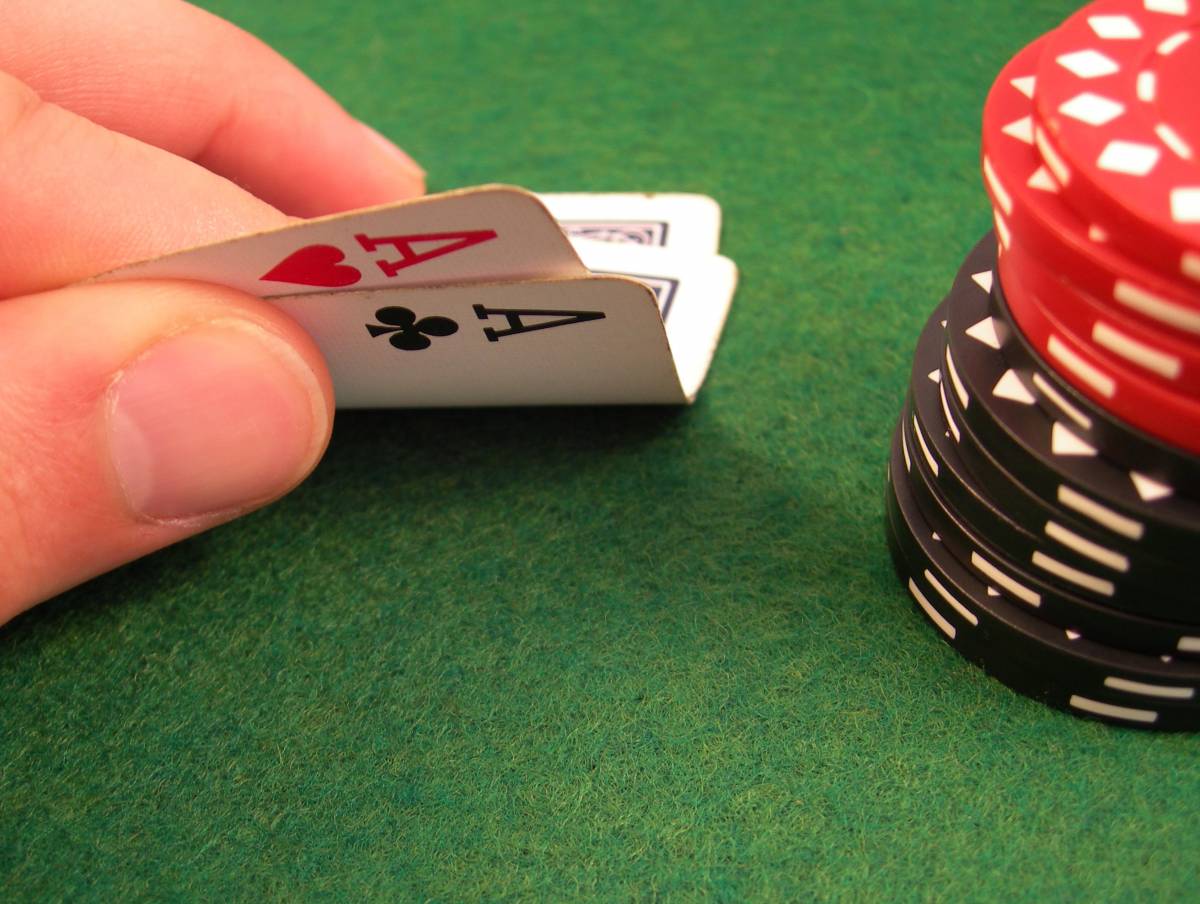Introduction
What Wins In Texas Holdem: In a game of Texas Hold’em, knowing which hands are the strongest and how they rank is essential for success. Understanding the hand rankings is crucial in determining the winner at showdown and maximizing your chances of winning the pot.
Texas Hold’em hand rankings are based on the standard poker hierarchy. The objective is to create the best possible five-card hand using a combination of two private hole cards and the five community cards on the board.
Will provide an overview of the hand rankings in Texas Hold’em. Starting with the highest-ranking hand and descending to the lowest, players will discover the hierarchy and relative strength of each hand. By grasping these rankings, players can make informed decisions during gameplay, including when to bet, call, raise, or fold.
Knowing which hands have the highest potential for success allows players to strategize effectively, evaluate the strength of their opponents’ hands, and ultimately increase their chances of winning in Texas Hold’em.

What wins in Texas Holdem poker?
Here’s what wins, top to bottom:
- Royal Flush: The best possible poker hand is a straight flush to the ace, better known as a royal flush: 10-J-Q-K-A, all in the same suit.
- Straight Flush: A five-card straight all in the same suit.
- Four of a kind: Four cards of the same value.
- Full House: Three of a kind and a pair.
In Texas Hold’em poker, the objective is to create the best possible hand using a combination of two private cards (hole cards) dealt to each player and five community cards placed on the board. Here are the standard hand rankings from highest to lowest:
1. Royal Flush: A, K, Q, J, 10 of the same suit. This is the highest-ranking hand and is extremely rare.
2. Straight Flush: Five consecutive cards of the same suit. For example, 8, 9, 10, J, Q of hearts.
3. Four of a Kind: Four cards of the same rank. For example, four Kings.
4. Full House: Three cards of the same rank combined with a pair. For example, three Queens and two Jacks.
5. Flush: Five cards of the same suit, not in sequence. For example, five spades.
6. Straight: Five consecutive cards of any suit. For example, 4, 5, 6, 7, 8 of mixed suits.
7. Three of a Kind: Three cards of the same rank. For example, three Aces.
8. Two Pair: Two sets of cards with the same rank. For example, two Kings and two Queens.
9. One Pair: Two cards of the same rank. For example, two Jacks.
10. High Card: If no player has any of the above combinations, the player with the highest-ranking card wins. If the highest cards are equal, the next highest cards are compared, and so on.
During gameplay, the player with the best hand wins the pot. In the event of a tie, the pot is split equally among the winning players.
How does a Texas Holdem game end?
When a player wins all of the chips in play, the tournament or Sit And Go has come close. Cash games don’t have a formal finish because players may always rebuy if they lose their chips, but participants usually agree to conclude the game at a specific time.
A Texas Hold’em game can end in several ways. Here are the most common scenarios:
1. Showdown: The game reaches the final betting round, and two or more players remain in the hand. Once the final bets are placed, the players reveal their hole cards, and the player with the best hand based on the standard hand rankings wins the pot. This is the most common way a Texas Hold’em game concludes.
2. All-In Situation: If a player goes all-in and no other player is willing to match their bet, the remaining players continue the hand. The community cards are dealt, and the final bets are made. At the showdown, the player with the best hand wins the pot. In this scenario, the game can end with a single player winning the pot or multiple players participating in the showdown.
3. Other Players Folding: During the course of the hand, if all players except one fold their hands, the remaining player wins the pot without having to reveal their hole cards. This can happen if a player makes a bet that no one is willing to call or raise, forcing their opponents to fold.
4. Agreement or Deal: In certain situations, especially in informal or friendly games, players may choose to negotiate and make an agreement or deal regarding the distribution of the remaining chips without completing the hand. This is known as a “chop” or “chop pot” and allows players to end the game without going through the entire hand.
It’s important to note that the specific rules and conditions of a Texas Hold’em game may vary depending on the house rules or the specific tournament format being played. However, these are the general ways a Texas Hold’em game can reach its conclusion.
Is Texas Holdem a game of luck or skill?
skill
So, what separates players, causing some to win more over time, and others to post a loss? The answer is simple: it’s skill. Therefore, poker has to be classed as a game of skill overall, as it’s skill, and not luck, that leads to players making money over the months and years they play the game.
Texas Hold’em is widely regarded as a game that combines both luck and skill. While luck plays a significant role in determining which cards are dealt, skill comes into play in how players strategize, make decisions, and manage their gameplay throughout the hand and the course of the game.
Here are the key factors that contribute to the skill aspect of Texas Hold’em:
1. Hand Selection: Skilled players understand the importance of starting hand selection. They consider factors such as position, chip stack sizes, and table dynamics to make informed decisions about which hands to play and which to fold.
2. Positional Play: Skilled players utilize their position at the table to gain advantages over opponents. They make strategic decisions based on their position and adjust their betting and play style accordingly.
3. Reading Opponents: Skillful players develop the ability to read and interpret their opponents’ actions, betting patterns, and body language to gain insights into their hand strength and intentions. This information helps them make more informed decisions.
4. Bankroll Management: Successful players understand the importance of managing their bankroll effectively, setting stop-loss limits, and avoiding tilt or emotional decision-making.
5. Bluffing and Deception: Skilled players know when and how to bluff effectively. They can use their understanding of the game dynamics, table image, and opponent tendencies to make well-timed bluffs and maximize their chances of success.
6. Post-Flop Strategy: Skilled players excel in post-flop play, analyzing the community cards and adapting their strategies accordingly. They consider factors like pot odds, drawing possibilities, and the potential strength of their hand relative to the board.
While luck does influence individual hands, skillful players consistently outperform less experienced or skilled opponents over the long run. The best players are those who can consistently make better decisions based on their understanding of the game and its intricacies.
In summary, Texas Hold’em is a game that requires a combination of skill, knowledge, strategic thinking, and the ability to adapt to different situations. While luck plays a role in the short term, skill is the defining factor in the long-term success of players.

Can you win at Texas Holdem?
Texas Hold ‘Em Poker is a game that rewards good play. There’s some luck involved, but a good player will beat bad players the vast majority of the time if you know the rules.
Yes, it is absolutely possible to win at Texas Hold’em. While luck plays a role in individual hands and short-term outcomes, skilled players who make strategic decisions, utilize effective bankroll management, and consistently employ sound gameplay can achieve long-term success in the game.
To improve your chances of winning at Texas Hold’em, consider the following:
1. Study and Learn: Invest time in learning the rules, strategies, and concepts of Texas Hold’em. Familiarize yourself with hand rankings, positional play, pot odds, and other fundamental aspects of the game. Continuously educate yourself by reading books, watching instructional videos, and studying the techniques used by successful players.
2. Practice and Gain Experience: Regularly play Texas Hold’em to gain practical experience and develop your skills. Participate in low-stakes games or free online poker platforms to hone your decision-making abilities, learn from mistakes, and refine your strategies.
3. Bankroll Management: Manage your bankroll wisely to ensure you can withstand the inherent variance in poker. Set limits for the amount of money you are willing to risk and avoid playing at stakes that are beyond your financial comfort zone.
4. Observe and Adapt: Pay attention to the dynamics at the table, observe your opponents’ actions, and adapt your strategies accordingly. Look for patterns in their betting behavior, spot weaknesses, and exploit opportunities.
5. Emotional Control: Maintain emotional control and avoid tilt, which is a state of frustration or emotional imbalance that can lead to poor decision-making. Stay focused, disciplined, and make rational choices based on the information available.
Remember that winning at Texas Hold’em requires a combination of skill, strategy, patience, and discipline. While you may not win every hand or every game, adopting a long-term perspective and consistently applying sound principles will increase your chances of success over time.
How many people can play Texas Holdem?
There are a few basic rules for Texas Hold ’em. The game is typically played with two to ten players, using a standard deck of 52 cards. The objective is to make the best possible five-card hand, using any combination of the player’s two-hole cards and the five community cards.
Texas Hold’em can be played with as few as two players and as many as ten players at a single table. However, it is most commonly played with six to nine players at a table, as this provides a good balance between having enough players to create strategic gameplay and maintaining a reasonable pace of the game. The number of players can vary depending on the setting, such as home games or casino tournaments, and the specific table size and seating arrangements available. It’s worth noting that the number of players can impact the dynamics of the game, including the number of hands played per hour, the amount of betting action, and the overall competitiveness of the table.
Why is called Texas Holdem?
Where did the name Texas Holdem come from? Hold’em basically refers to having to keep your initial cards throughout the hand. You cannot “draw” any more cards. It is called “Texas” Hold’em because it was invented in Texas during the 1920s.
Texas Hold’em is believed to have originated in Texas, United States, during the early 1900s. The game gained popularity in the Lone Star State and eventually spread to other parts of the country and around the world.
The “Hold’em” part of the name refers to the game’s structure, where each player is dealt two private cards (hole cards) that they hold and combine with the community cards to form the best possible hand. The term “hold” signifies that players hold their private cards throughout the hand and use them to make their final hand.
The game was originally referred to simply as “Hold’em,” but the addition of “Texas” to the name is believed to have been added to distinguish it from other variations of poker that were played at the time. This helped identify the specific style of poker being played and gave recognition to its Texas origins.
Over time, Texas Hold’em grew in popularity and became one of the most widely played and televised forms of poker, both in live tournaments and online. Its popularity can be attributed to its easy-to-understand rules, strategic depth, and the excitement generated by the community card format and the potential for dramatic comebacks.
How does Texas poker work?
In Texas Hold ‘Em, each player is dealt two pocket cards, and then five community cards are revealed. There are four rounds of bets–once after the hole cards are dealt, and then three rounds as different community cards are revealed. Players must make the best poker hand combination possible with their five cards.
Texas Hold’em, also known as Texas poker, is a popular form of poker that is played with a standard 52-card deck. Here is a step-by-step explanation of how Texas Hold’em works:
1. Blinds: The game starts with two players to the left of the dealer posting forced bets called the small blind and the big blind. These bets ensure there is a starting pot to play for.
2. Hole Cards: Each player is dealt two private cards face down, known as hole cards. Only the player who receives these cards can see them.
3. Pre-Flop: Starting with the player to the left of the big blind, each player has the option to fold (discard their hand), call (match the big blind), or raise (increase the bet).
4. The Flop: After the pre-flop betting round, the dealer places the first three community cards face-up on the table. These cards are known as the flop and are shared by all players to create their best hand.
5. The Turn: Following the flop, a fourth community card, called the turn or fourth street, is placed face-up on the table.
Can you use all 5 cards in Texas Holdem?
In hold’em you can use any five cards out of the seven to make your hand — in fact, you don’t even have to use the two hole cards which were dealt to you! This is called “playing the board,” and it happens if your best five-card poker hand is the one which is on the board in front of you.
Yes, in Texas Hold’em, players can use all five community cards on the table along with their two private hole cards to form the best possible hand. This means that a player’s final hand can consist of any combination of the seven available cards: their two hole cards plus the five community cards.
For example, if the community cards on the table are 2♠ 5♥ 8♦ 9♣ A♦, and a player’s hole cards are A♣ K♠, the player can use the Ace from their hole cards together with the Ace on the board to form a pair of Aces. Their final hand would be A♣ A♦ A♥ 9♣ 8♦, which is three of a kind (Aces) with an 8 and a 9 as kickers.
Players are not required to use both of their hole cards in forming their final hand. They can use one, both, or none of their hole cards, combined with the community cards, to create the best hand possible. The goal is to make the highest-ranking hand using any combination of the available cards and beat the hands of the other players in the game.

Conclusion
In Texas Hold’em, understanding the hand rankings is essential to determine the winner at showdown and make informed decisions throughout the game. By knowing which hands have higher value and rank above others, players can strategize effectively and increase their chances of winning.
The hierarchy of hand rankings in Texas Hold’em follows a standardized order. At the top is the Royal Flush, the most powerful hand consisting of A, K, Q, J, and 10 of the same suit. Next is the Straight Flush, followed by Four of a Kind, Full House, Flush, Straight, Three of a Kind, Two Pair, One Pair, and High Card.
By grasping these rankings, players can evaluate the strength of their hand and make appropriate betting decisions. Recognizing the value of their own hand relative to the community cards and the potential hands of opponents is crucial. It allows players to bluff effectively, fold when necessary, and seize opportunities to maximize their winnings.
Ultimately, winning in Texas Hold’em requires a combination of skill, strategy, and understanding of hand rankings. With this knowledge, players can navigate the complexities of the game, make calculated moves, and increase their chances of emerging victorious at the poker table.










